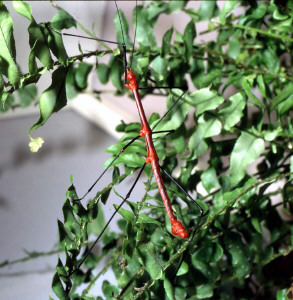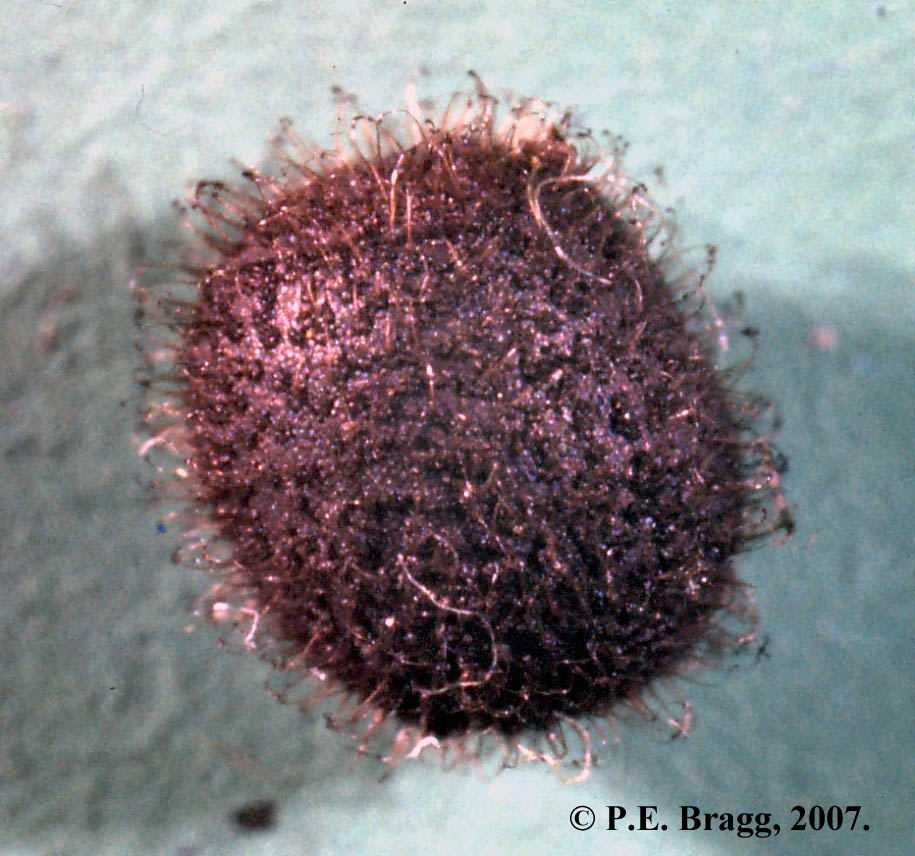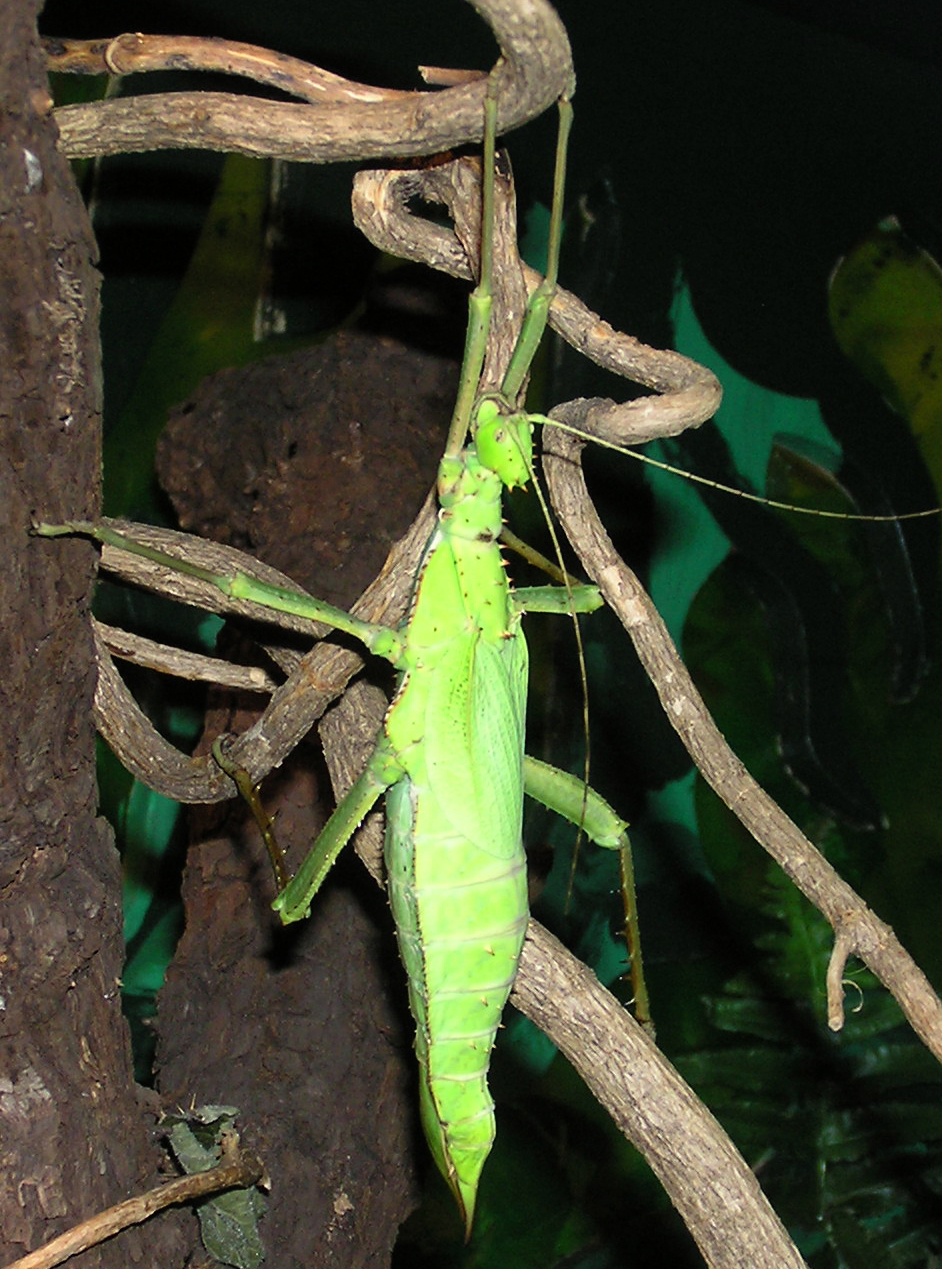Phasmids: An Introduction to Stick and Leaf Insects
Stick insects (known as walkingsticks in the USA) and leaf insects form the order Phasmida (also known as Phasmatodea, Phasmatoptera, and Cheleutoptera). The name of the order derives from the Latin ‘Phasma’ meaning phantom, apparition, spectre or ghost. The majority of species camouflage themselves as sticks and leaves, although some such as Oreophoetes peruana are very brightly coloured.

Adult male Oreophoetes peruana
Diet: What do they feed on?
All known Phasmids are herbivorous. Some species are known to eat a wide variety of leaves, while others are likely to have a much narrower diet. In captivity many species can be reared using plants from the family Rosacae (especially Bramble), Oaks, Hypericum and Eucalyptus.
Care: How to look after stick insects?
See this page.
Life Cycle
Eggs
The female often drops the eggs randomly, although some species bury their eggs in the soil, glue their eggs to an appropriate surface, or pierce them into a leaf (Asceles sp.). In general, the female will lay in excess of 100 eggs, with some species laying several thousand. The eggs may hatch in as little as a few weeks, while in captivity some can take over 18 months to hatch. The capitulum of some species is attractive to ants, perhaps giving the eggs additional protection if the ants carry them into their nest.

Egg of Epidares nolimetangere (de Haan, 1842)
Nymphs
Phasmids undergo an incomplete metamorphosis, with the young nymphs resembling miniature (albeit wingless) adults. Like all insects, Phasmids have an exoskeleton and growth is achieved by the periodic shedding of this external layer and expanding the new, larger, skin underneath. This process is known as moulting or ecdysis. Phasmids generally moult between 4 and 8 times. The female often undergoes one more moult than the male.

Eurycantha calcarata ssp. (PSG 44) moulting
Adults
Adult insects are the only stage to have fully developed wings, although wings are often absent in the female or in both sexes. Mating takes place with the transfer of a spermatophore. Parthenogenesis (the ability for the female to lay fertile eggs without mating) is well known and common in the Phasmida.
Length and Weight
Phasmids are amongst the largest of all insects and the genus Phobaeticus contains the longest known extant species. Females of Heteropteryx dilatata are the heaviest known Phasmids, possibly weighing in excess of 65 grams.

Adult female Heteroptery dilatata
Camouflage and Colouration
Phasmids generally rely on camouflage to evade predators. However, a number of species use active defences. Some species (e.g. Eurycantha) have large spines on the legs. By rapidly bringing their legs together the insects can use their spines to inflict a painful wound. Some species are also capable of making a loud, startling, hissing noise using their wings. Other species have brightly coloured wings which they can flash to alarm predators. A number of species, such as Anisomorpha buprestoides, can produce a defensive spray capable of causing temporary blindness in humans and much discomfort.
Avoiding Predators
A number of other predator escape behaviours exist. Nymphs of Extatosoma tiaratum resemble ants in both appearance and frenetic behaviour. Catalepsy (feigning death) and falling to the ground is used by many of the less bulky species, including the commonly kept Carausius morosus.
The Phasmid Study Group
The Phasmid Study Group has kept around 300 species in captivity although a number of these have been lost in culture for a variety of reasons. Keeping these insects as ‘pets’ has become a popular hobby and a large amount of information regarding their care is available.
